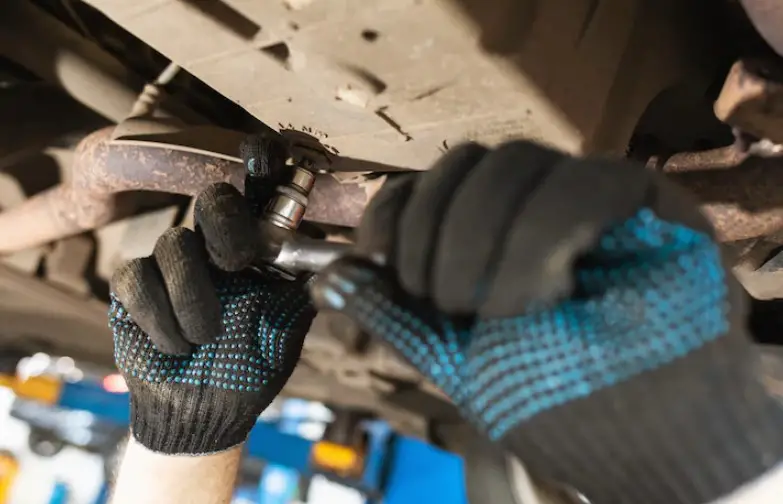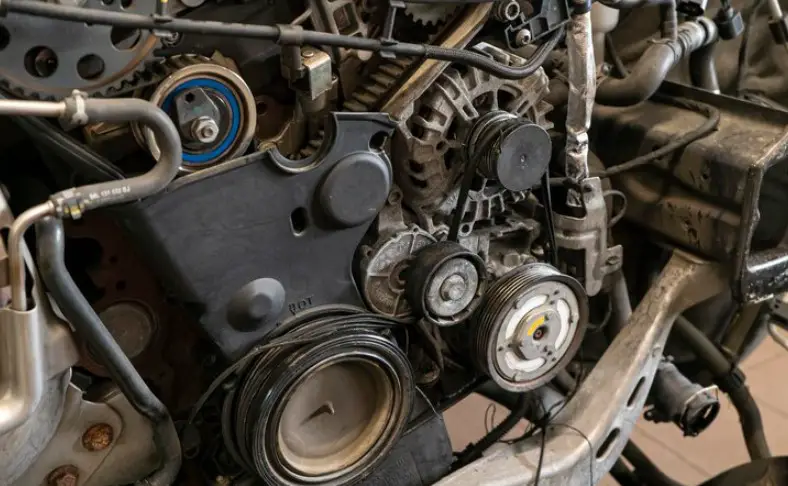Last Updated on February 16, 2023 by Leepu Da Maxim
A crankcase pressure sensor is a component that is primarily designed to detect the level of overpressure available within the engine oil in the crankcase. The overpressure mentioned above results from diesel leakage in the engine oil, resulting in excessive pressure within the system.
Key Takeaways
- The main purpose of a crankcase pressure sensor is to monitor the pressure inside the crankcase of an internal combustion engine
- The crankcase pressure sensor measures the pressure inside the crankcase and sends a signal to the ECM to adjust the engine’s air/fuel mixture and other parameters
- If the crankcase pressure is not right then it could create a problem with the engine’s ventilation system, which can lead to decreased engine performance
A 2-Stroke Engine vs. a 4-Stroke Engine and How the Engine System Relates to the Crankcase

A two-stroke engine is typically an internal combustion engine capable of completing a power cycle with only two piston strokes during a complete revolution of the crankshaft. Cylinders receive the air and fuel mixture via the crankcase pressure sensor, and this is typically a space where the engine’s piston travels.
On the other hand, unlike a two-stroke engine which doesn’t have an oil sump, a four-stroke engine has an oil sump at the bottom of the crankcase. Most engine oil is held within the bottom of the crankcase, which features the crankcase pressure sensor.
The fuel and air mixture doesn’t pass through the crankcase in a four-stroke engine. The only gasses that go through the crankcase sensor in a four-stroke engine do so through blow-by via the combustion chamber.
What is a Combustion Chamber?
The combustion chamber is an internal combustion engine where an explosion that powers your car’s pistons is created. The explosion is produced by burning the fuel and air mixture. Therefore, the mixture of air, fuel, pressure, and electricity gives birth to an explosion that generates the power that enables your car to move backward or forward.
Where is the Crankcase Sensor Situated?
The crankcase comprises the lower half of the primary bearing journals in most vehicles. The bearing caps complete the other half. Within this crankcase lies the crankcase pressure sensor.
The prominent bearing journals hold the crankshaft in place, and these bearings allow the crankshaft to rotate within the engine.
The Function of the Crankcase Pressure Sensor

Generally, the crankcase pressure sensor is an essential component in the crankcase that provide the PCM (Powertrain Control Module) with the correct crankcase pressure amount to maintain the desired atmosphere in the engine.
When the PCM senses an electrical value operating outside the crankcase pressure range, a P051B code will be triggered.
The P051B Code: What Does it Mean?
The P051B is a DTC (Diagnostic Trouble Code), which means the “Crankcase Pressure Sensor Circuit Range.” The code is synonymous with the later Ford models.
The sensor informs the PCM of the engine’s amount of pressure building up. The PCM requires accurate pressure sensor values to prevent the gaskets and seals from damaging by extra pressure.
The other critical function of the sensor is to monitor pressure when the unburnt fumes travel back to the engine through the PCV (Positive Crankcase Ventilation) system.
Suppose your car has a clogged PCV system; it will build up the crankcase pressure. This scenario might result in oil leaks and, sometimes, gasket failure. In this case, a wrong signal will relay back to the PCM from the crankcase press Sensor, thus setting a P051B code.
Here are the possible causes of the P051B code:
- Electrical problems.
- Defective pressure sensor.
- Faulty PCV valve.
- Broken tubes.
- Chaffed or disconnected lines.
- Clogged PCV system.
Symptoms of the P051B Code (Faulty Crankcase Pressure Sensor)
When you get code P051B, be aware that your car’s engine is not performing optimally. If you are unsure of the code, observe how your car behaves. The symptoms of code P051B include:
- Decreased fuel economy.
- Leaking of the gasket.
- Black soot smoke from the engine.
- Inaccurate crankcase pressure values.
- Issues with engine performance.
- “Check engine” light illumination.
- Sludge buildup.
To understand the symptoms listed above, let’s discuss them further.
Decreased Fuel Economy: In this case, your mileage becomes lower than the norm, meaning that you will drive a short distance in your car with the amount of gas that can cover a longer distance. When faced with this problem, the efficiency of your car decreases.
Gasket Leaks: Suppose your car suffers a gasket leakage; you will encounter numberless problems, including losing your vehicle’s coolant. Water and pressure might also erode the car’s engine block metal.
Black Smoke: If you witness black soot smoke coming from the engine, then be aware that the pressure in the crankcase is incorrect; thus, code P051B has been set.
Inaccurate Crankcase Pressure: Due to crankcase pressure discrepancies, you might experience difficulty reading the data correctly. The pressure readings can be either too low or too high.
Engine Performance Issues: when the code P051B is set, your car’s engine can’t run smoothly. In most cases, you will experience rough engine idling.
Other causes of rough idling include clogged air filters, dirty fuel injectors, damaged plugs, etc.
“Check engine” light illumination: Whenever you get this sign, it indicates that your engine has a problem, and it could be good if you take your car to a specialist for checking.
Sludge buildup: In this scenario, you will experience sludgy and thick engine oil that features carbon and some buildups. The oil will not be free-flowing as required.
Diagnosing and Fixing a Faulty Crankcase Pressure Sensor

The protocols for diagnosing a faulty crankcase pressure sensor (code P051B) vary depending on your car’s model, year, and make.
Take your car to a specialist mechanic for diagnosis if you are unfamiliar with the diagnosing process. However, DIY enthusiasts who know how to go about the diagnosing business can check the car’s manual to acquaint themselves with the process.
After diagnosing the trouble code, the next step is troubleshooting the issue. Troubleshooting the trouble code is difficult if you lack the appropriate tools and don’t have automotive skills. If your DIY skills are insufficient, it could be better to contact a professional who will do a better-fixing task.
However, if you believe in your automotive skills and prefer fixing the issue personally, ensure you gather sufficient knowledge by reading the correct repair manuals.
Can I Do Crankcase Replacement without Changing the Crankcase Pressure Sensor?
The PCV system has particular parts that you can replace to keep the fuel and air mixture filtering working better. However, the replacements don’t require you to change the crankcase pressure sensor.
If you desire to change the sensor, the sensible thing to do is a complete crankcase repair or replacement.
Frequently Asked Questions about the Crankcase Pressure sensor?
What is the Cause of Excessive Crankcase Pressure?
The entire crankcase valves are closed by default, especially those in the cylinder that sits lower whenever the pressure comes up. When the crankcase softens, it gains more force.
Can a Clogged Air Filter Result in High Crankcase Pressure?
When filters are blocked, the high-pressure buildup creates seal and gasket leaks, thus the engine oil leakage.
Conclusion
The crankcase is an essential component of your car as it enables combustion to take place, hence giving your vehicle the power that enables it to move. Constantly monitor your car’s condition by monitoring the crankcase pressure sensor. Suppose the sensor is faulty; follow the abovementioned steps to fix it.
Reference 1: Crankcase Pressure Sensor – Auto Care (fixcarz.com)
Reference 2: Ford Escape CRANKCASE PRESSURE SENSOR P051B 2.0L EcoBoost 2017 – YouTube

Hi, I’m Leepu Da Maxim , a dedicated car enthusiast with over 10 years of experience in this field, and I’m thrilled to share my passion and expertise with fellow car enthusiasts like you. My journey began in my hometown West Jordan, Utah, where my fascination with the mechanics and design of cars sparked at a young age. Over the years, this passion has evolved into a commitment to providing accurate, insightful, and engaging information about all things automotive through CarsAmazing .

